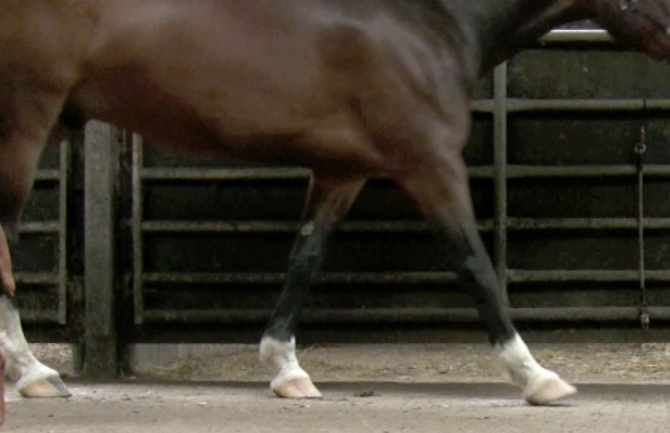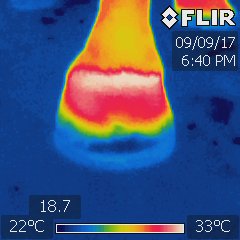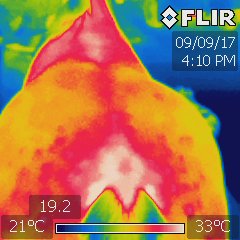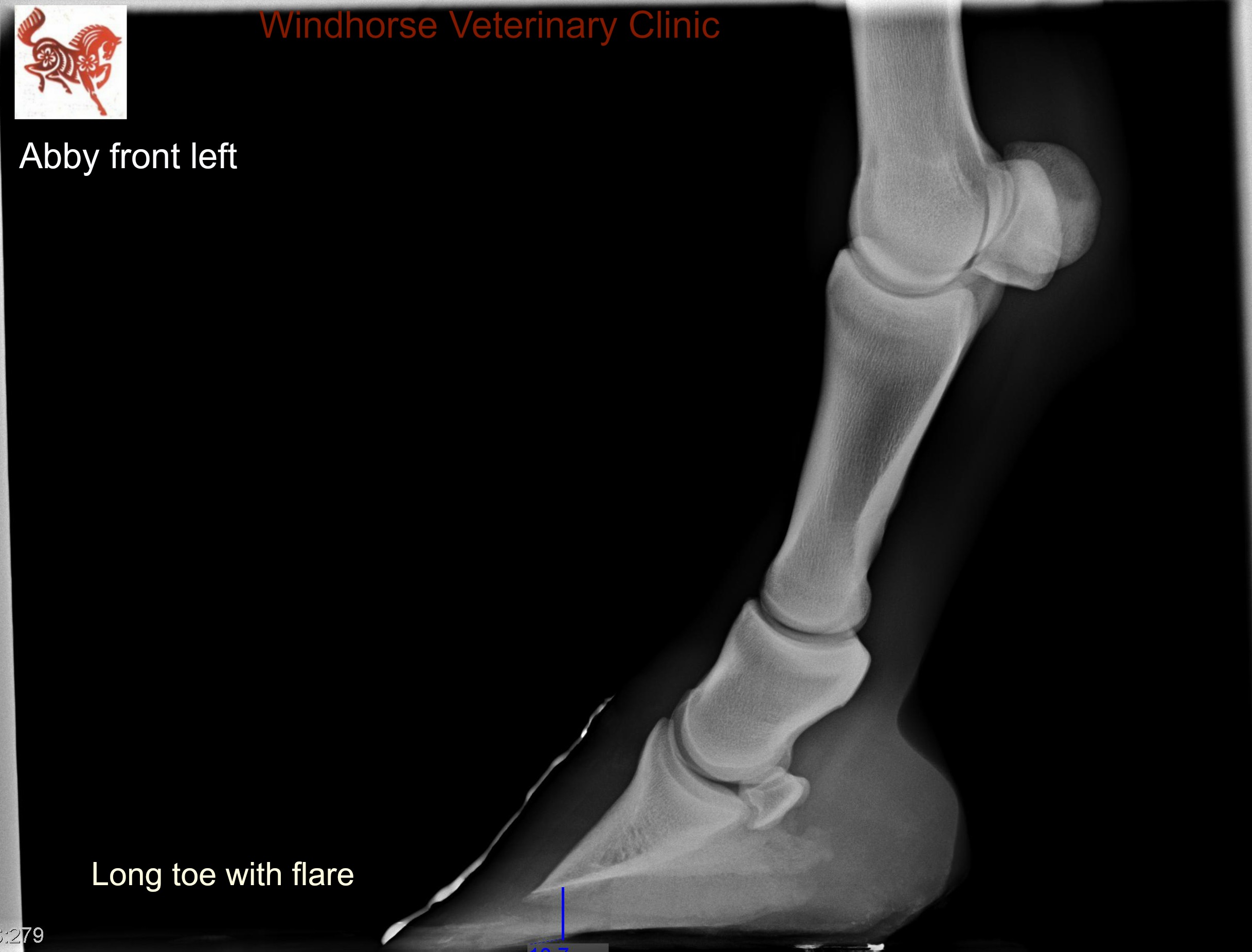
Whew! What a day we had. All that planning was so worth it. The Basic Hoof Care Clinic of 1017 was a HUGE success. Randy Hensley joined us from Iowa and Matt Jenkins came from Illinois.
Randy gave a presentation in the morning to get everyone on the same page. He covered material that included important landmarks for doing the trimming to how to manage horses so they can enjoy their best life. Randy and Matt brought the lecture portion to life when we started to trim 3 horses after lunch. Each horse had a story to tell. Dallas, a seven-year-old QH mare, hadn’t had her feet trimmed in about a year. Liberty, a 14 yr old pony mare, just getting her feet back into good shape. And Abby, a three yr old Qh mare, who had just been shod two days before the clinic but whose feet weren’t very well balanced.
Some important lessons we learned from this clinic include:
- Toe first landings are ALWAYS bad news!
- Horses act badly when their feet hurt.
- Thermographic scans of feet before and after show that many feet aren’t getting enough blood to be healthy.
- Radiographs (X-rays) of feet brings so much more information into what the foot looks like, right now. It also shows us landmarks to use for trimming.
- Boots & pads are the secret sauce for your horse’s well-being.
Let’s take these one by one.
Toe First Landing
What exactly does this even mean? Have you ever watched your horse walk or trot. I mean REALLY, REALLY WATCHED them. Watch their feet. Video it and play it in slow motion if you need to. I want you to focus on the landing of the front feet. How is the foot landing?
- Heel first with nice extension of the front legs. Looks very elegant.
- Flat footed: the entire foot landing at the same time. Not as pretty as #1 but functional.
- Toe-first: Does the tip of the toe contact the ground first? Are there little puffs of dirt in front of the feet (Or do the feet act like little bulldozers?)? Is the stride shortened and choppy?
Your horse gets 10 points if he falls into the #1 category, about 7 points for the #2 and -100 for the #3 landing.
Toe first landings are NOT how horses were ever intended to move. This is a total wack-a-do way of going for them. It shortens their stride and makes it choppy. This happens because the toe touches down, then the sole then the heel. This is makes for a whole lotta shakin’ in that hoof capsule. That poor little navicular bone (you know, the one everyone and their brother are worried about) gets just pummeled and pinched from this type of foot fall. Not. Cool. At. All. The entire weight of the horse is landing on the very tippy, tippy of PIII, the coffin bone. This bone is not designed to support that kind of concussion. And it hurts to just watch them walk like this.

Toe first landings often happen with traditional “pasture trims” and shoeing for a variety of reasons. These include:
- The toes are left too long for the horse
- The heels are too low
- The heels are underslung
- The heels are too high and pulled together
- Frog infection and thrush
- Club foot or high/low that is allowed to worsen instead of being kept in check with proper trimming done more often.
I want you to understand that all of these conditions create pain for the horse and the toe-first landing is his way of trying to avoid the pain from whatever is happening. So, let’s agree to start watching for this and learn what you can do to help reverse this. The horse will land either flat or heel first AS SOON AS HIS FOOT FEELS GOOD! Often, this means balancing the foot correctly and adding some hoof protection in the form of boots and pads. The focus of this clinic was to transition horses out of shoes. (This can be managed in shoes….there are many qualifiers for this. This is an entirely different blog. I have one horse currently doing well this way. I’ll get that case together for you soon.)
Horses act badly when their feet hurt:
Seriously, if I had just 1 red cent for all the crappy advice available on social media for how to fix X, I could probably buy my own island.
Repeat after me: Trained, well-broke horses that start to have behavioral problems are in PAIN. It is our job to find the source of the pain and fix it to the best of our ability. Barrel horses that won’t go in through the gate, rope horses that won’t back into the box, quiet horses that can’t stand in cross ties; these guys all hurt. Often it is a combination of body pain and foot pain and it is hard to know what started first. It doesn’t matter. Pain is pain and a painful horse is a dangerous horse. Horses that “need” a lot of body work to keep them performing often have pain originating elsewhere that keeps them from responding well. Horses with long toes and underslung heels usually stand with their feet too far underneath them. This creates bracing in their stance and more bracing when they are moving. They are using muscles to stand that are supposed to have other jobs. And the muscles responsible for proper posture aren’t even firing and responding correctly. This makes walking an almost impossible feat and performance can’t happen until this is corrected.

One of the neatest parts of the day was using the thermography camera to capture images of the feet before we did anything. We found all the horses had decreased blood flow in feet that aren’t in balance. This was very apparent in shod feet. The blood flow returned to the feet when there was better frog pressure and feet had a more natural contact with the ground. I’m not sure what this means for sure. It is thought that 25% of a horse’s proprioception comes from the bottom their feet. This is how they know where they are in time and space. 25% of this knowledge comes from their feet. Does this mean if there isn’t proper blood flow to the foot, are they missing proprioceptive clues about where each foot is? If they can’t feel their feet or the ground their feet are on, how do they know where to put their feet? And then we ride them….This is something that needs more studies.


These feet scans tell quite a tale! The image on the left is with a shoe on. The very blue on the bottom is the shoe, the blue turning yellow above is part of the hoof. The coronary band always shows white. There is a large amount of circulation right here. The image on the right was after the shoe was removed and the foot trimmed. It appears there is better circulation farther down the foot after the shoe has been removed.
I had an absolute brainstorm about the thermography scans right before I went to sleep on Friday night before the clinic. It was all I could do to not run through the house to tell everyone my great idea. What was my idea? Do a whole body scan before doing any trimming then see if there is a difference after. On our study of one horse….we did see a difference! Dallas seemed to have changes in her scan after we did her feet.


The image on the left is of Dallas’ back before any trimming was done and the right was about one hour after the work was done, she had boots on and had gotten a drink of water. She was resting in a stall. To me, both of these images show significant disruption in the blood flow to her large hip muscles. She was clinically much more painful on the right hip. The bright white dorsal stripe up by her withers shows too much heat in the area. Likely from a saddle that was impinging here. So, now I just have more questions than answers.
Horse-side radiographs help show us many of the internal structures of the foot. This really shows us where to aim for the correct break-over at the toe. It also shows us where that first joint of the foot is. It should be level with or just above the coronary band. In many horses, it has descended down into the hoof capsule. This causes all kinds of pathology for the foot and dysfunction in the gait. These horses are very painful and often have some very dangerous behavioral problems. Sole depth and palmar angles can be seen on a lateral view too. These often go together. Thin soles mean the coffin bone (PIII) is closer to ground and not well protected from the concussive force of the landing. Pair this with a toe first landing and that is a bunch of dysfunction for that horse to overcome. Palmar digital angles that are negative or level also create pain and dysfunction in the landing of the foot. The coffin bone should have a slightly positive palmar digital angle to protect it.


Lastly, boots and pad are the magic ingredient for helping your horse move better. There are many different combinations. The goal it to create some good, positive frog pressure and encourage your horse to have a heel first landing or at least a flat landing. We saw this in both Dallas and Abby. Both these mares had toe first landings before anything was done. After the trim they both walked better. Dallas was fitted with boots and pads. She walked out with a spring in her stride and much improved length of stride with her front legs. Randy and Matt glued a set of boots on Abby. She was really sore and this was the best option for getting boots on her. She also walked off with a heel first landing. Their owners and everyone at the clinic was very amazed at this almost “instant” fix.
Boots are necessary for the transition out of shoes period. This can take a few weeks or up to a year depending on how much pathology is present in the current feet. Boots allow the heels to spread correctly and get the right kind of pressure on the frog. These changes help the horse move into a heel first landing. I can tell you from experience, when your horse starts moving with a heel first landing it is a most amazing sight. You might just spend hours watching the feet land and say to yourself “heel first, heel first, heel first….with a silly grin on your face”. You get the idea.
I am deeply grateful to know both Randy and now, Matt. I feel very lucky to be able to share this knowledge with our clients and all the clinic participants. This is something I feel very strongly about and will continue to help teach.
What was your favorite part of the clinic and what was the big take-away for you?? We want to hear.
